“This post contains affiliate links, and I will be compensated if you make a purchase after clicking on my links.”
Last Updated on September 7, 2023
Affectionate, social and fiercely loyal – these are just some of the characteristics that make a Great Dane one of the best family pets to have.
However, no matter how lovable Great Danes can be, getting their fur everywhere at home is a still concern. And with a dog that big, you’ll surely find fur almost everywhere – clothes, carpets, beds, the sofa, car seats, etc.
Although Great Danes are a single coat dog breed and are considered moderate shedders, having to deal with their shedding can still become a problem. Why? Well, because they are one of the largest dog breeds out there, so a bigger dog only means more fur!
In this article, you will learn everything you need to know about Great Dane shedding. Continue reading to find out why and how much Great Danes shed and how you can minimize it.
Great Dane Shedding
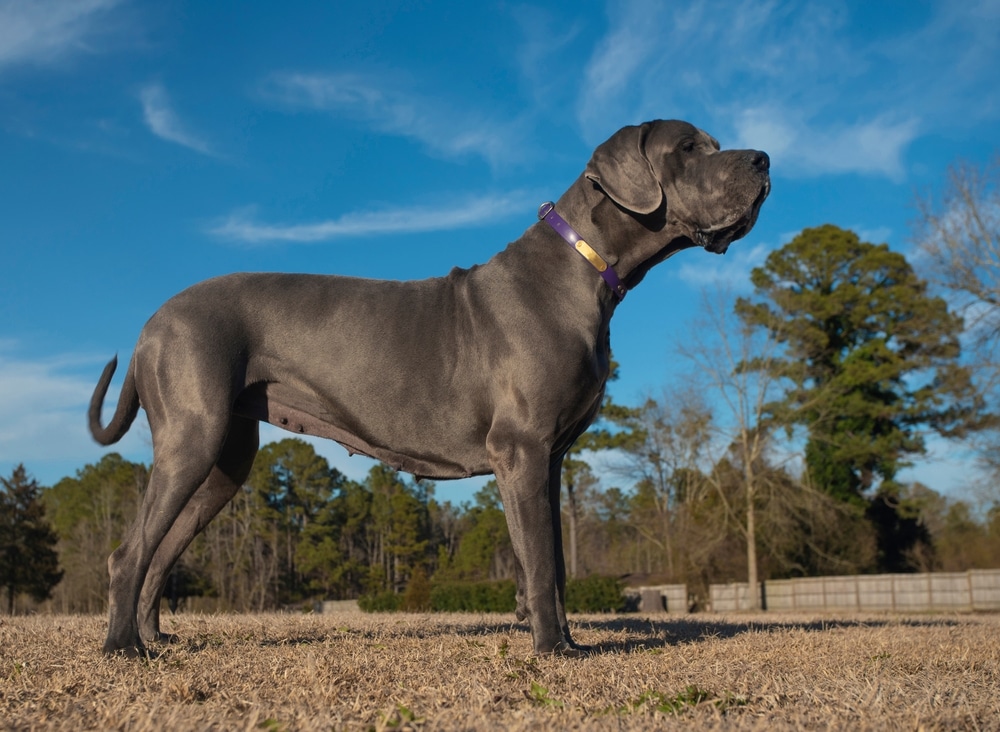
Great Danes have a single, short and smooth coat and they are considered moderate shedders. Although, due to their huge size, they carry a lot of hair, therefore shed a lot of it, too.
Great Dane shedding usually happens once or twice a year. And generally, they shed more hair during the spring season. Furthermore, at 18 months, shedding becomes excessive because they blow off their puppy coats.
Natural Process of Shedding
All dog hair, not only a Great Dane’s, undergo a natural life cycle in different growth phases, namely:
- Anagen Phase: This is the start of the cycle where new hair starts to grow.
- Catagen Phase: Transition phase of hair growth where the hair stops growing and begins to detach from the hair follicle’s base.
- Telogen Phase: Also known as the resting phase. The hair stops growing but new hair is preparing to start the growing phase.
- Exogen Phase: This is the shedding phase. Old hair fall out while new hair starts to take the place of old hair that the dog is shedding.
The occurrence of this natural process is a good indication that your Great Dane is healthy and that its shedding is not due to any problem.
Single Coat vs Double Coat
Dogs either have single or double coats. Luckily, Great Danes have single coat hair. So, what does this mean and what is its difference from dogs with double coats?
As the name suggest, single coat means having only one coat of fur and not having an undercoat. As for a double coat, a dog has an undercoat that is, most of the time, shorter than his outer coat, and the hair usually have a dense, woolly texture. Some of the most famous double-coated dog breeds are Golden Retrievers, Siberian Huskies, Australian Shepherds and Chow Chows.
Single-coated dogs, like the Great Dane, usually leave less fur on surfaces, as compared to double-coated dogs. Furthermore, they are a lot easier to groom since there is no undercoat to shed. Naturally, single-coated dogs are a lot easier to maintain compared to double-coated dogs.
However, having a single coat doesn’t automatically mean being hypoallergenic. Great Danes, despite having a single coat, are not a hypoallergenic breed. Though, thanks to their short, single coat, they cause fewer allergic reactions than long, double coat breeds such as Golden Retrievers.
Do Great Danes Shed a Lot?
Great Danes are moderate shedders. And they only shed once or twice a year. While they do not lose hair more than double-coat breeds, they still shed more fur than an average sized or small dog breed.
Great Danes can weigh around 100 to 170 lbs and can stand as tall as 28 to 34 inches. Since they are such an enormous dog breed, they carry and shed more fur.
Generally, Great Dane shedding is the same throughout the year, but increases during the spring time. This is because their coat prepares for the upcoming rise in daily temperature due to the change in seasons.
Shedding in Great Dane puppies increases at 18 to 24 months. This is because it is in between this stages in their life where they blow out their puppy coat. And this shedding can last for about a month.
When this happens, a change in their coat color also happen. For instance, a Black Great Dane puppy can shed orange-tinted fur while shedding. Furthermore, the amount of shedding also differs from dog to dog. Some Great Danes shed more than other Danes. Mainly, this is due to the difference in the nature of their coat colors.
Tips to Reduce Great Dane Shedding
Great Dane shedding is a natural process and it cannot be completely stopped. However, you can make it manageable and reduce it.
Here are some tips to reduce Great Dane shedding:
1. Brushing
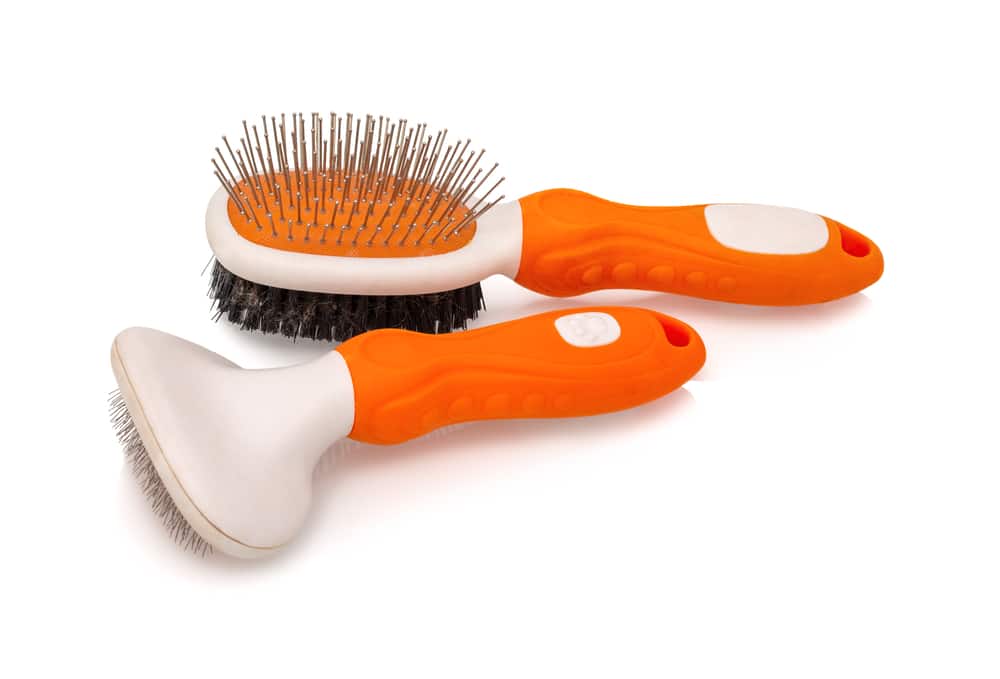
Brushing the coat is the most basic tip to reduce Great Dane shedding. It is suggested to brush your Great Dane at least twice a week. Brushing helps remove loose fur, hence reducing Great Dane shedding. And it also helps spread natural oil throughout the hair follicles, keeping the fur shinny and glossy.
For single coat breeds like the Great Dane, any medium bristle brush is recommended. But if it’s spring time and your Dane is shedding quite a lot, you can use something like the Zoom Groom to help with excessive shedding.
| Preview | Product | Price | |
|---|---|---|---|

|
KONG - Zoom Groom Dog Brush, Groom and Massage While Removing Loose Hair and Dead Skin - Blue |
$13.06 |
Buy on Amazon |
Furthermore, if your Great Dane is shedding excessively, you can brush their coat regularly, even thrice or four times a week to keep its shedding under control.
Tips on brushing
- Hold brush near the dog’s head and start sweeping downward.
- Do not go too hard on your Great Dane when brushing. Harsh brushing can possibly irritate the dog’s skin leading to skin problems.
- Brushing outdoors is better than indoors. This means less allergic reactions and not having to clean dog fur in your house, especially on carpets. Furthermore, when you brush outdoors, you won’t have to clean up because small animals like birds and/or squirrels love using dog fur for their nests.
- The frequent the brushing, the less the amount of hair. Shedding can be reduced visibly if you commit to brushing your Great Dane regularly.
2. Bathing
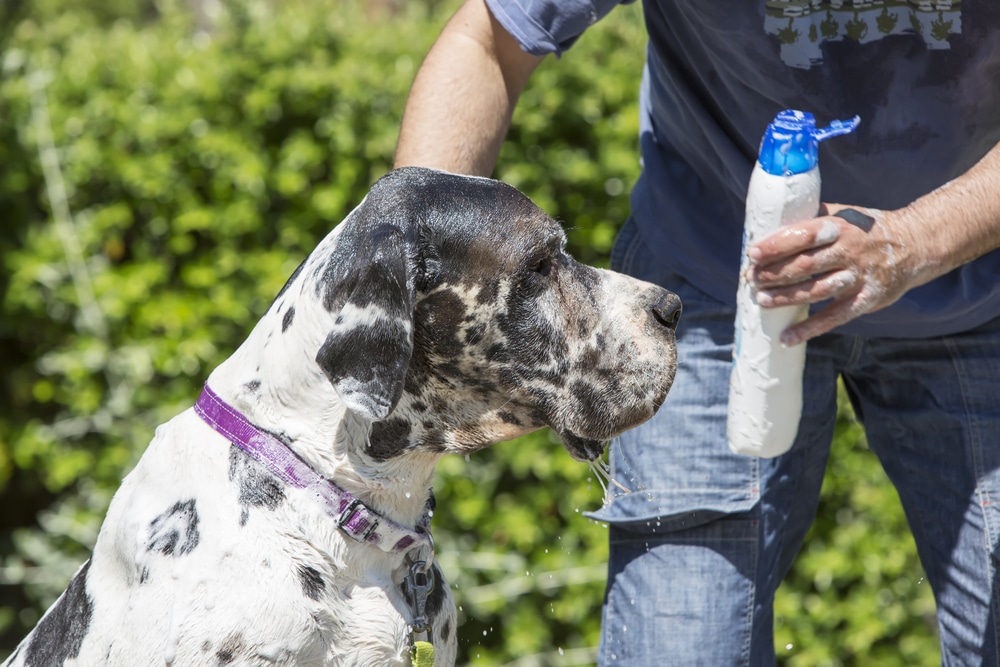
Great Dane shedding can also reduced if you bathe them once every fortnight, unless they don’t get into a messy situation, that is. Great Danes are prone to a number of skin problems such as dry skin, so frequent bathing is not recommended.
Bathing every two or three weeks can help remove dirt from your Dane’s coat and get rid of loose hair. Furthermore, when bathing your Dane, make sure to use a mild dog shampoo. Strong shampoos can make Great Dane shedding worse and can actually result in dry and rough skin.
Additionally, coconut oil can help reduce Great Dane shedding and keep a dog’s coat shinny. You can apply it onto the dog’s coat right after a bath.
Here are a few shampoo options you can find on Amazon:
How to Bath a Great Dane to Reduce Excessive Shedding
Here are a few tips in bathing your Dane when it is shedding excessively:
- Start by giving your Dane a nice warm bath. Wet your dog using warm water.
- Brush your Great Dane thoroughly while it is getting a bath. This is an effective technique to reduce Great Dane shedding and to get rid of loose fur.
- If you do not want to use a brush during bath, you can use a shampoo and a conditioner that helps with shedding. Or simply use an all-in-one dog shampoo and conditioner.
- Dilute the shampoo with water and apply it to your Great Dane.
- Rinse off shampoo and apply the conditioner next.
- Massage the conditioner through the dog’s coat.
- Thoroughly rinse of any shampoo and/or conditioner off your Great Dane’s fur. Your shedding Great Dane would leave behind almost all loose hairs in the bathtub.
3. Proper Diet
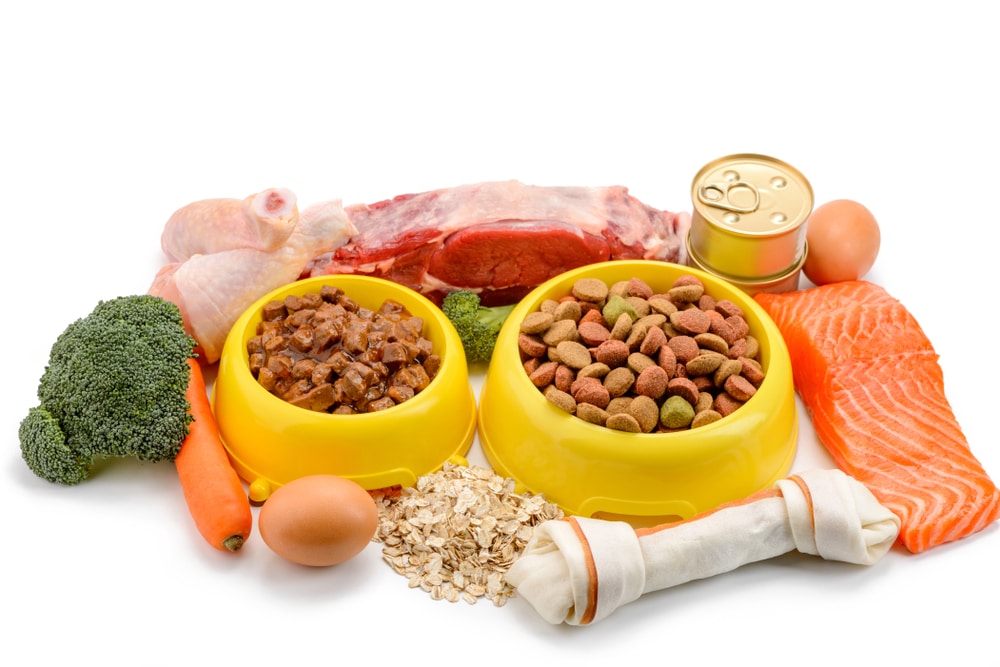
Proper diet is important to maintain the overall health of a Great Dane. So, that means a proper and balanced diet can affect the coat and skin condition of a Great Dane. If you feed your dog with high quality dog food, then shedding can also be reduced.
Here are options to ensure your Great Dane gets proper nutrition:
Kibble
If you opt to feed your Great Dane dry dog food or kibble, ensure that the brand contains ingredients such as omega fatty acids, flax oil and other food supplements. These ingredients help keep your Great Dane’s coat shiny and can reduce shedding.
Raw food
A diet that consists of raw food is said to be a lot healthier than dry dog food. It has a lot of benefits, including an immune system boost and a healthier coat.
In case your Great Dane dog is shedding heavily while on kibble, you can try switching to raw diet. There might be a chance that your Dane is allergic to some ingredients in dry dog food. Furthermore, when you switch from kibble to raw diet, the shedding can be reduced gradually. You can see visible results at least three weeks after the switch.
Oils
The moisture in oils can improve the skin condition of dogs, therefore minimizing the amount of shedding. You can either add oils in your Dane’s food or apply the oil directly to the coat to help with Great Dane shedding.
The following oils can keep Great Dane shedding at a minimum and can make the dog’s skin and coat healthy and shiny:
- Coconut oil
- Fish oil (salmon oil)
- Flax oil
Oil consumption at least once a day is effective in reducing shedding. You can start adding it to your Dane’s food in small quantity and then gradually adding more.
For example, if you want to start adding coconut oil in your dog’s food, start with one teaspoon. And then slowly add more until you notice an improvement in your Great Dane’s shedding.
Supplements
Adding supplements like Omega-3 is also suggested to help reduce Great Dane shedding. It pacifies scratching in dogs that is caused by shedding. Even veterinarians recommend Omega-3 to prevent excessive shedding in dogs.
Omega-3 is easily available in the form of oil pills. You can either squeeze the oil pill and sprinkle its content or add the whole pill on your Great Dane’s food.
Furthermore, Vitamin E supplements can also reduce shedding in Great Danes the same way as Omega-3.
Why Do Great Danes Shed?
As mentioned above, shedding is a natural process that every dog undergo. However, there are times where shedding is caused by other factors.

At times, these factors cause unusual and excessive shedding that results in dry skin, irritation and in extreme cases, bald patches. If you notice a sudden and unusually excessive shedding in your Great Dane, it would be best to take it to the vet and get it thoroughly examined.
Below, we list down other factors that can contribute to unusual Great Dane shedding.
1. Allergies
Excessive Great Dane shedding could be caused by allergies. It can be an allergic reaction to certain plants, chemicals and/or food.
At times, Great Danes, when coming in contact with weeds or grass, can result into excessive shedding as an allergic reaction. Other Danes can also be allergic to chemicals present in detergent or cleaning agents.
And finally, Great Danes can be allergic to the ingredients in their food. Switching to a raw diet is suggested in these situations, because raw food can gradually reduce the shedding and actually make the Dane’s coat and skin healthier.
2. Medical Conditions
Great Dane shedding can also be directly linked to a number of medical conditions and medicines. For instance, when you apply anti-tick or mite medicine, their skin and coat reacts negatively through increased shedding.
Furthermore, Danes that undergo surgeries shed a lot afterwards. It can be after giving birth, spaying or neutering, ear cropping, etc. And the major cause of post-surgery shedding is the use of anesthesia during the procedure.
Particularly in female Great Danes, shedding can be linked to their hormones. Female dogs in general shed more after their heat cycle, during pregnancy and after giving birth.
And of course, medical conditions like hypothyroidism can also cause Great Dane shedding. And the hair loss usually starts on the tail.
3. Mange
Mange is a skin disease that is caused by microscopic mites and/or fleas. And this disease causes excessive shedding, itching and scratching in dogs.
Mange is a painful skin condition and is commonly seen in stray, neglected and/or abused dogs. It can then lead to skin irritation, inflammation, bald spots, crusty patches and worse, skin infections.
4. Stress
Like humans, stress can trigger hair loss in dogs. Great Dane shedding increases when they get stressed and anxious. You might notice that when your dog becomes nervous or fearful on a car ride or at the vet, they shed more than normal.
This is because when dogs are nervous, stressed or anxious, a hormone called Epinephrine (or Adrenaline) releases the hair on a dog’s coat.
5. Dandruff
Dandruff can also contribute to Great Dane shedding. In many cases, dandruff is simply a symptom of dry skin that is caused by the changing seasons or weather. However, it can also be a sign of an unhealthy coat, that leads to excessive shedding.
As mentioned above, Great Danes are predisposed to dry skin due to frequent bathing. So ensuring that your Dane only gets a bath once every two or three weeks can help. Also, using high quality shampoos and making sure they get proper nutrition is important.
However, if the dandruff has become too stubborn to deal with, it is best to bring your Great Dane to the vet for proper diagnosis.
Does One Coat Color Shed More Than Others?
That is definitely a no. All Great Danes, regardless of their coat colors, shed. Although in some Danes, the shedding looks more obvious due to the color of their coat.
For example, white or light-colored hair is predominantly more visible than black hair. Therefore, it seems that white Great Danes shed more than Black Great Danes. And the same goes with Fawn Great Danes.
Tips on house cleaning to reduce Great Dane hair
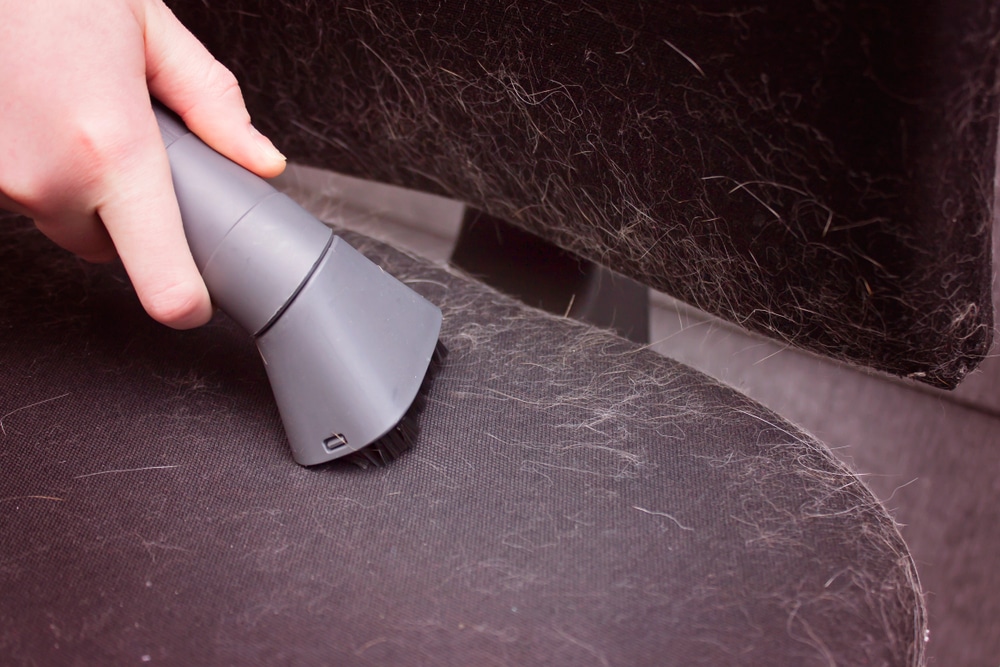
Great Dane shedding is a major home concern for Great Dane owners. When you have a dog, you can find fur almost everywhere – clothes, the sofa, the carpet, beds, and sometimes even in your coffee!
When you brush your Great Dane regularly, it means you have to clean the house frequently as well. So, here are a few helpful tips to keep dog fur at a minimum at home!
- Vacuum the house at least two to three times a week. If there is more shedding than usual, you might have to vacuum every other day.
- If fur on the sofa is a major concern, resort to using removable sofa covers. A sofa would be a lot easier to clean with this.
- Make sure to brush your Great Dane regularly. And if possible, always do it outdoors. This way, you don’t have to clean all the fur you just brushed off of your dog.
Conclusion
Great Dane shedding is a natural process that all dogs undergo. But since Great Danes have a short and single coat, it’s a lot easier to maintain compared to double coat breeds, provided that you maintain and take care of it properly.
Maintaining and taking care of your Great Dane’s coat isn’t only for their appearance, but to keep their coat healthy and shinny. Because a healthy and shinny coat means less skin problems and less shedding.
If you think that the shedding is unusually excessive, then you have to seek professional help and go to the vet to immediately identify its cause.



What is Flex Oil?